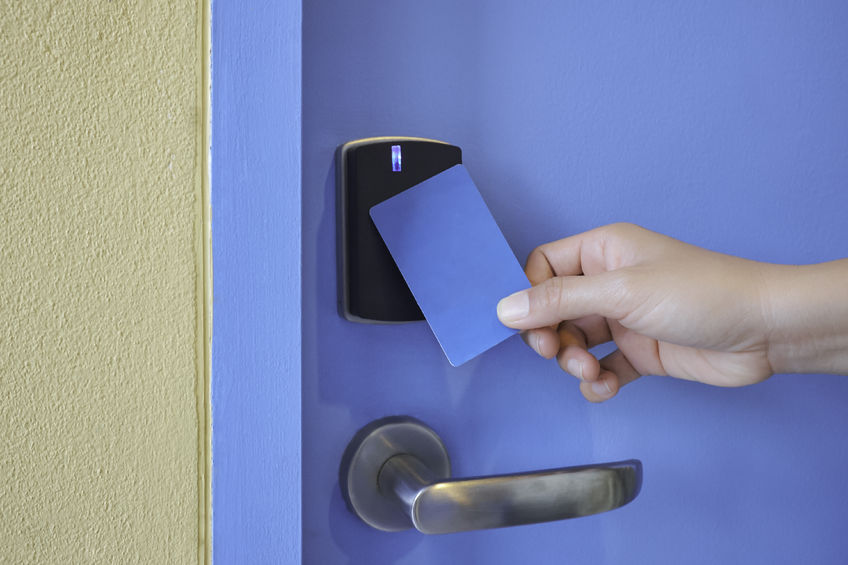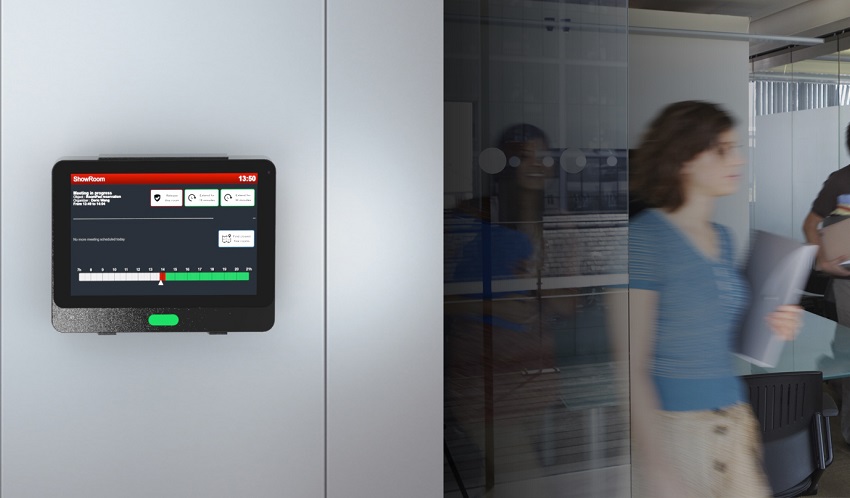Most organizations today have installed door access control systems that provide authentication and authorization to restricted areas of a building.
These could be a secure lab in a pharmaceutical company, a room with expensive equipment in a university, a server room in a data centre, or meeting rooms in an organization.
Traditionally, room booking systems and door access control have operated independently, causing inconveniences and potential security risks. However, with advancements in technology, it is now possible to link these two systems, creating a seamless and integrated solution.
Below, we discuss how to achieve this seamless integration between the room booking system and the door access control panel.
What does a door access control panel comprise?
A door access control system has the following individual components:
- The central access control server.
- Individual controllers that manage a set of doors.
- Card readers.
- Magnetic door locks/smart locks.
- Manual switch to unlock doors.
There is a lot of information on the internet related to door access control systems and how they operate. We shall not be covering them here.
How can a room booking system talk to a door controller?
To provide control to the room booking system, you have to map some information between the system and the access controller. These are:
- A unique set of identification for the room that is common to both systems.
- A unique identification for the user that is common to both systems.
Once you establish this, you have to find a method to update the two systems with the above information so that both are in sync.
The technique used depends a lot on the types of systems and their level of customization.
Another factor to consider is the refresh frequency of the data. This depends on how frequently you update access controls.
The first step is that you have to establish a common mapping between the two systems. The second step is that you have to establish the type of communication between them. Essentially, there are two methods of communication. The push method and the pull method.
Push Method
With the push method, the room booking system pushes the relevant information to the door access control server to indicate the doors and users who need access. The system monitors the booking data in near real-time and sends the data over through standard TCP/IP protocol.
The event-based push method is more efficient to implement the integration. When you book a room, the system sends the data as a notification or event.
The downside is that changes to the API of the system can result in the need to upgrade the synchronization process as a whole. You can deeply couple the two systems.
You can use this method when the existing door access control system has a well-defined API to send information. So, the room booking system vendor can customize to perform any updates.
Pull Method
The door access control server polls the room booking system regularly to check for bookings and updates the system accordingly.
You can use this method where the door access control system is a proprietary system without any API for connectivity. In such a case, the system vendor will make the required customization for the two systems to communicate. Both the room booking system and the door access control system will require customization.
The advantage of this system is that you can de-couple the two systems from each other.
The disadvantage is that the communication of the information is not real-time as there will be a time lag between the polling scheduler that can delay the opening of doors. You have to apply certain business rules to allow this time lag.
Which Method to Choose?
The choice of method depends a lot on the type of systems that are currently in use. In most circumstances, the controller may not have an API and most controller providers are cautious about having third-party systems integrate with their system due to security concerns.
In such cases, only the PULL method will work and requires that you involve both the control vendor as well as the room booking vendor to work together.
Business Rules
There is a link between the two systems. The applied business rules are very important for the effectiveness of the system. Information such as the frequency of information communication, the grace periods allowed and lead times needed to grant and revoke access play an important part in getting this system running smoothly.
Wrapping Up
The seamless integration of the room booking system with door access control streamlines operations, eliminates manual interventions, and provides a convenient and secure environment for users.
Investing in such an integration not only saves time and money but also contributes to a more productive and agile work environment. For example, a student who enrolls in a music course at a university is granted permission to the chamber and orchestra studios. Once he graduates, the permission is automatically revoked.
Embrace the power of technology and experience the benefits of a connected room booking and access control system today.




